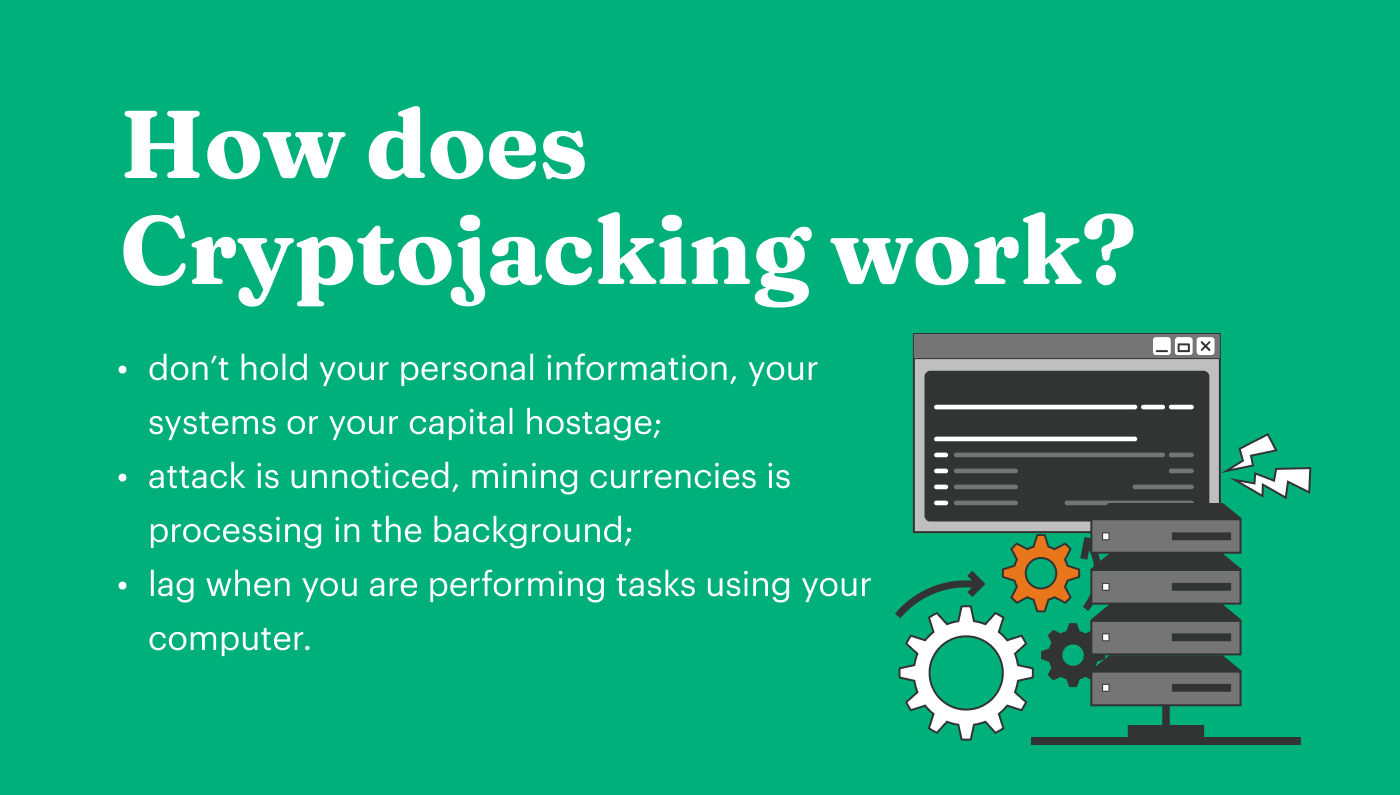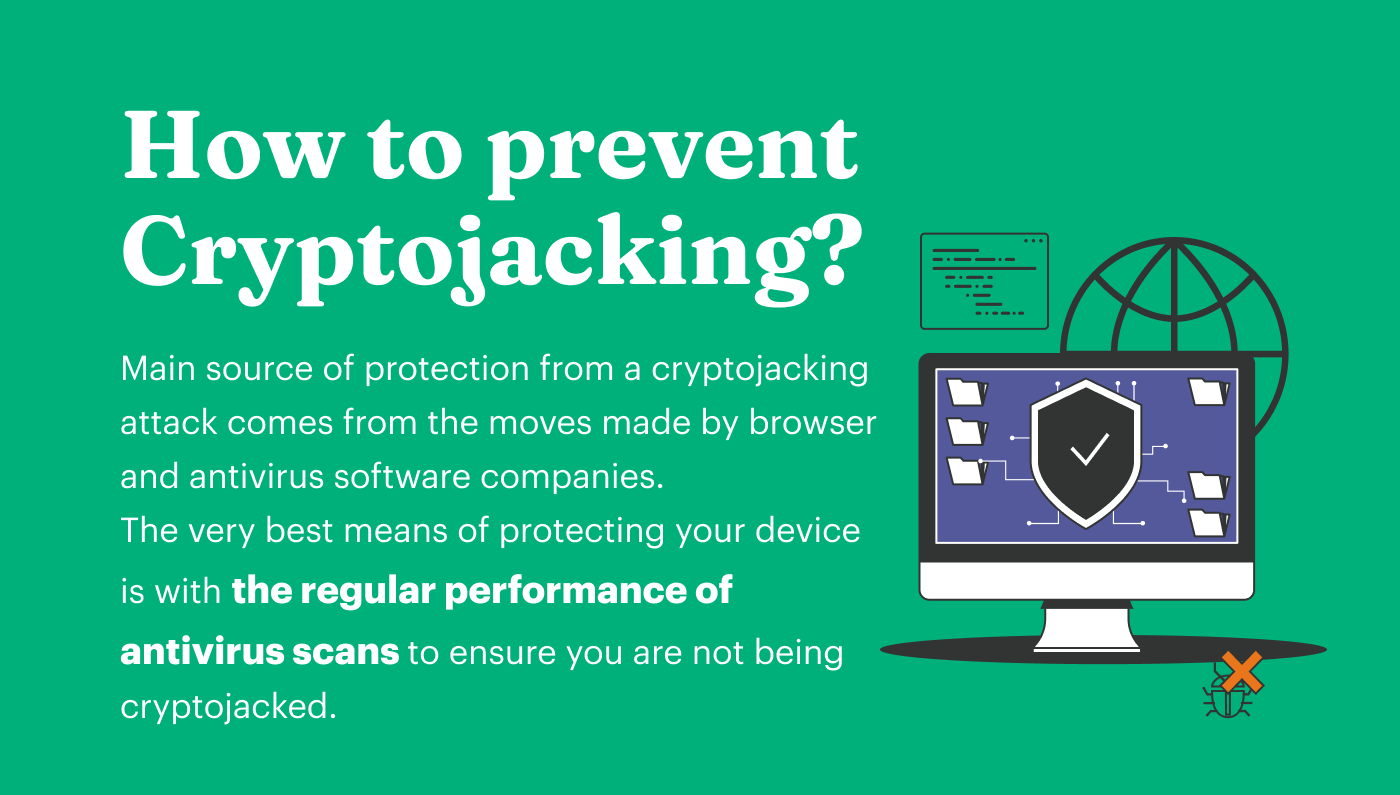What Is Cryptojacking and How Can You Defend Against It?
Even if you aren’t invested in the crypto space, it is important to understand the dangers of various types of hacks and how to defend against them. One of the most vicious types of crypto-related attacks is cryptojacking and anyone can can fall victim to it, even if they’ve never owned, or heard of cryptocurrency.
In this post we will examine what cryptojacking is and how it works, as well as how to protect against various types of cryptojacking malware.
What Is Cryptojacking?

Let’s start with the basics. What is a cryptojacking attack?
It is a type of malicious code or software that a hacker installs on your device. The software is designed to direct your computer to mine digital currencies. However, you don’t receive the cryptocurrency that your device has mined. Rather, it is sent by the hacker to their own wallet address. In other words, the hacker is using your electronics to generate profits on their behalf.
How Does Cryptojacking Work?

Cryptojacking attacks, in contrast to ransomware, don’t hold your personal information, your systems or your capital hostage. Instead, cryptojacking malware is quieter and far more subtle. In fact, cryptojacking detection can be challenging since the goal of such an attack is to remain unnoticed, mining currencies in the background without the victim ever being alerted to the fact that their device is being hijacked.
So, what is a cryptojacking attack doing to your device? Well, most of the time, all you may be aware of is a lag when you are performing tasks using your computer. Performance will be slower, and you may experience some bugs. For a long time, you might not even know you have fallen victim to an attack, attributing the issue to the age, or other stresses on the functioning of your device.
Not only is cryptojacking hard to detect on your device, but it is also hard to trace back to the hacker. Cryptojacking tends to be focused on the mining of privacy coins, using localized malware, and sending low-value currency, making the hacker harder and less worth the effort to trace.
How Common is Cryptojacking?
Since instances of cryptojacking are not easily identified, it makes it a relatively low-risk of attack. It is also quite easy to automatically spread through standard malware delivery meformthods such as viruses and phishing links. Even so, its use is limited for the simple reason that it is generally highly inefficient and not particularly profitable.
Mining is costly and large-scale, demanding a huge expenditure of energy to turn a profit. In fact, even the biggest Bitcoin farms, comprised of thousands of rigs, don’t always make a significant return on investment. Therefore, a cryptojacker, stuck with an ineffective script, because it uses the victim’s device CPU for mining, will be more of a drain on electricity than a lucrative money-making scheme.
For this type of attack to work, and to be at all profitable, the cryptojacker would need simultaneous access to a large group of devices, which is no easy task. In addition, privacy coins, which are often the target of this kind of code have tweaked their algorithms to become more resistant to this type of threat.
How to Prevent Cryptojacking

Commonly, cryptojackers place crypto mining scripts in your browser when you visit a specific site, using it to very slowly mine cryptocurrency via your device. Your main source of protection from a cryptojacking attack comes from the moves made by browser and antivirus software companies to block these scripts and prevent your computer from being infected.
However, there are also many cryptojacking examples of more deeply embedded malware that can seriously damage your device. What cryptojacking malware is doing is placing a high level of stress on your computer from extended and extensive CPU or GPU use, which can eventually destroy it, over the long-term.
The very best means of protecting your device is with the regular performance of antivirus scans to ensure you are not being cryptojacked.
Cryptojacking Detection Tips
As we have noted, it can be hard to know whether your computer is just getting on in years or whether you are a victim of cryptojacking. If you want to check how safe your computer is, ask yourself these cryptojacking test questions:
Questions to indicate whether you have been attacked:
- Is your device running slower since you performed a download or installation?
- Have you seen a huge increase in your electric bill that cannot be explained by your daily activity?
- Is your computer overheating, even when you don’t have open programs?
Questions to indicate whether you are vulnerable to attack:
- Is your antivirus not working properly?
- Have you not done a virus scan in a while?
- Have you failed to update your computer with the latest antivirus version?
Protection from Cryptojacking and Other Types of Hacks and Fraud

Cryptojacking can happen to anyone, even those who are not digital currency owners and the best way to avoid the dangers is obviously with a strong, regularly updated antivirus.
Sadly, the words hacker and crypto share news headlines far too often. Due to the under-regulation and anonymity of the crypto space, anyone entering this arena should be aware that unfortunately, hacks and fraud are not uncommon. The most effective way to shield your capital, while still benefiting from lucrative digital currency market opportunities, is to use a fully licensed and regulated crypto investment platform.
Here at ArbiSmart, our EU licensed crypto arbitrage platform, complies with the strictest regulatory requirements, including the introduction of bank-grade data security protocols, the separation of client and company funds, the maintenance of sufficient operational capital, criminal background checks, the implementation of tough anti-money laundering and client identification procedures, regular external auditing and more.
This enables ArbiSmart clients to focus on other things, with complete peace of mind, while our fully automated crypto arbitrage platform securely and transparently generates passive profits of up to 45% a year, at close to zero risk.
Find out more about crypto arbitrage, or learn about a diverse selection of crypto-related topics on the ArbiSmart blog.